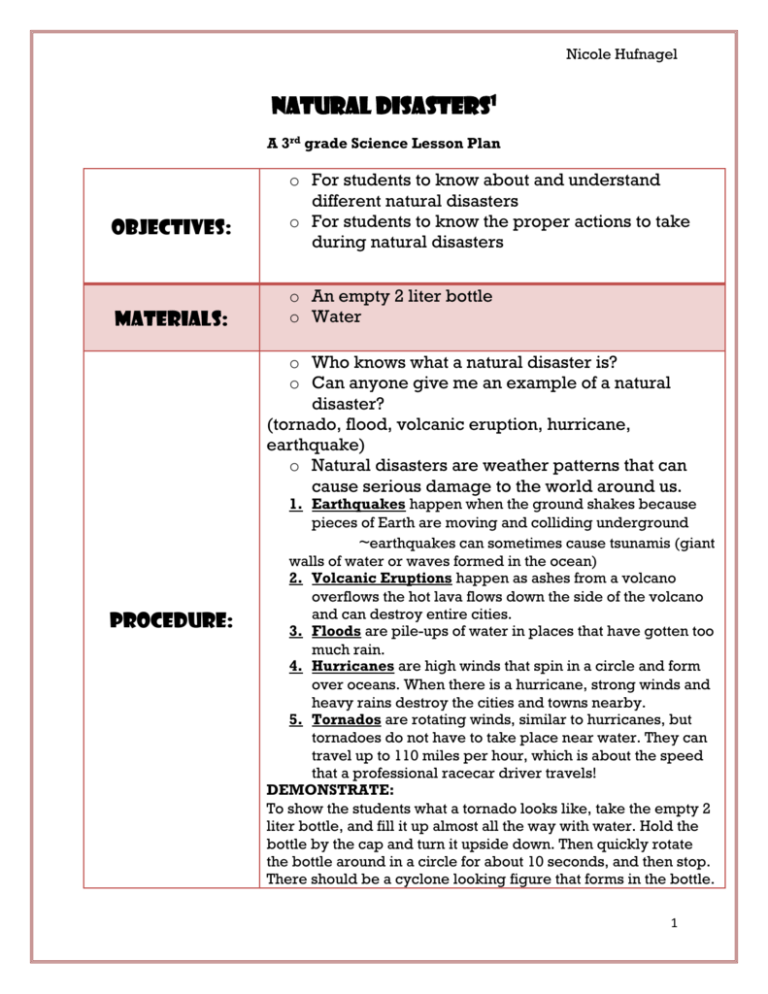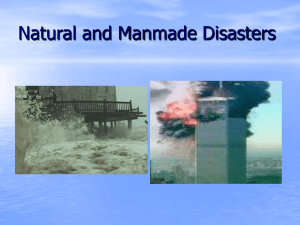Natural Disasters: 3rd Grade Science Lesson Plan
advertisement

Nicole Hufnagel Natural Disasters1 A 3rd grade Science Lesson Plan Objectives: Materials: o For students to know about and understand different natural disasters o For students to know the proper actions to take during natural disasters o An empty 2 liter bottle o Water o Who knows what a natural disaster is? o Can anyone give me an example of a natural disaster? (tornado, flood, volcanic eruption, hurricane, earthquake) o Natural disasters are weather patterns that can cause serious damage to the world around us. Procedure: 1. Earthquakes happen when the ground shakes because pieces of Earth are moving and colliding underground ~earthquakes can sometimes cause tsunamis (giant walls of water or waves formed in the ocean) 2. Volcanic Eruptions happen as ashes from a volcano overflows the hot lava flows down the side of the volcano and can destroy entire cities. 3. Floods are pile-ups of water in places that have gotten too much rain. 4. Hurricanes are high winds that spin in a circle and form over oceans. When there is a hurricane, strong winds and heavy rains destroy the cities and towns nearby. 5. Tornados are rotating winds, similar to hurricanes, but tornadoes do not have to take place near water. They can travel up to 110 miles per hour, which is about the speed that a professional racecar driver travels! DEMONSTRATE: To show the students what a tornado looks like, take the empty 2 liter bottle, and fill it up almost all the way with water. Hold the bottle by the cap and turn it upside down. Then quickly rotate the bottle around in a circle for about 10 seconds, and then stop. There should be a cyclone looking figure that forms in the bottle. 1 Nicole Hufnagel Ask the students what caused the water to look like a tornado. *they should talk about the circular motion of your hand as well as the circular motion of the winds as well. WHAT TO DO DURING NATURAL DISASTERS: -If it is a tornado, hurricane, or earthquake, you need to get into a protective room (with no windows) as low to the ground as possible -For volcanic eruptions or floods, find the highest place possible to stay safe! assessment: Standards: I would have the students complete an interactive quiz that has been developed for them on Group Table. Standard 3.3.6: Describe ways in humans protect themselves from adverse weather conditions http://en.wikipedia.org 1 resouces: http://www.ask.com 2











